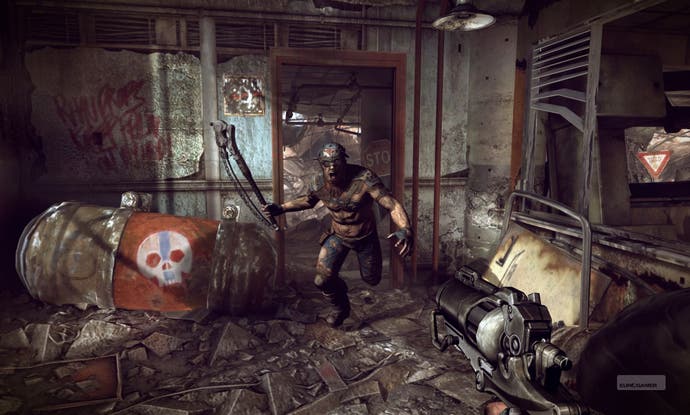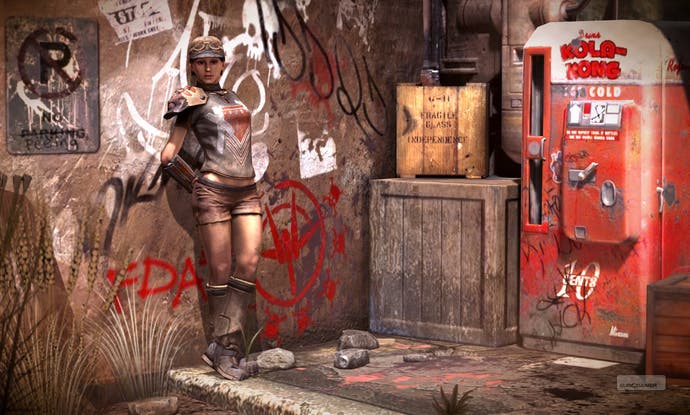Rage
Monster from the id.
"We are the pioneers of technology," announces lead designer Tim Willits with confidence at the start of his presentation of Rage. Is that really still true? Rage is id Software's first major in-house game since 2004's Doom III. By the time it's released next year, that will be seven years ago. Seven long years during which we've seen Unreal Engine 3 sweep the games industry and no less than two further iterations of Crytek's spectacular CryEngine. id defined gaming as much as anyone in the nineties, but aren't the days when it could call itself a pioneer long gone?
Willits doesn't need to justify his statement to us, however. Instead he just fires up Rage, created with the new id Tech 5. The game is at least a year away from release, but visually, it's almost flawless. Textures are busy with detail and eye-wateringly clean. Lighting is sharp. And the game runs fast, seldom if ever dipping so much as a toe below the 60-frames-per-second watermark, even when Willits jumps in a dune buggy and begins pelting across the landscape at extreme speed.
And here's the thing: the Rage demo is not running on some obscene high-end PC, but a regular Xbox 360. "John Carmack just loves to get things running as fast as humanly possible," Willits says casually. No kidding. The legendary coder's black magic mojo clearly hasn't left him yet, and the purchase of id by Bethesda's parent company ZeniMax Media is making more sense every frame-packed second. (Oh, and in case you're wondering, Willits claims it's currently even more stable on PS3.)

So that's id's technical relevance in 2010 confirmed with nonchalant ease. Elsewhere, however, Willits adopts a more humble tone. The action is still run-and-gun, he says, but Rage is "trying to improve the expectations people have of an id Software game". It has "other elements that make it more complete" - vehicle combat and racing, plus an actual story, and actual characters. Doom III lived in the long shadows of Half-Life 2 and the first two Halo games and as slick as it was, it couldn't help but look old-fashioned. Willits might as well say, we know we've got some catching up to do.
At the same time, he's keen to reel in some of the wilder claims that have been made about Rage in the three information-light years since its announcement. It is not quite an open-world game, being what Willits calls "open but directed", with optional side missions offering distractions from the forward thrust of its gameplay. Nor does it really have any role-playing game elements, Rage following the classic, now almost unfashionable FPS advancement path - the model id itself established - through an ever-expanding and extravagant armoury. The hero is the gun.

In other words, Rage isn't as hybridised, freeform or anarchic as Borderlands. It's hard not to draw comparisons with Gearbox's charming rogue, with both games having a touch of the Mad Max about their ramshackle wasteland societies, but in all honesty they're not particularly meaningful. Rage certainly shows id broadening its horizons, but the studio is still mainlining taut, hell-for-leather rollercoaster rides.
The game is split into two chapters organised around two hub locations, each occupying a DVD in the Xbox 360 version. "When you switch discs it's a really big story change. Once you move you won't want to go back," says Willits. It begins, not unlike Fallout 3, with your character emerging into a post-apocalyptic society - an asteroid destroyed most of civilisation - from a cryogenic "ark" beneath the earth's surface.









